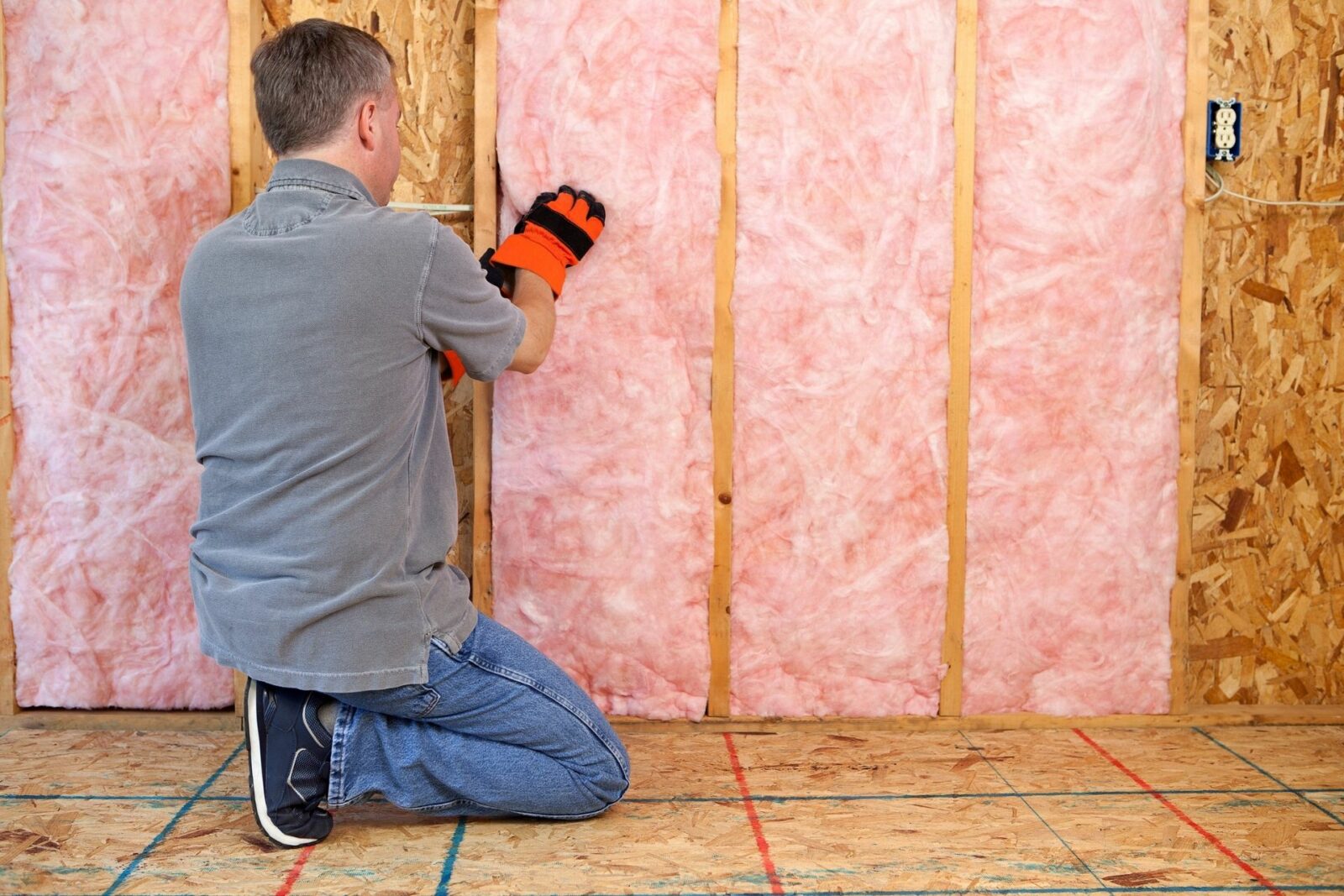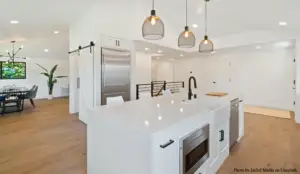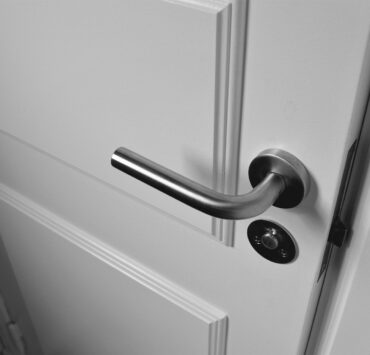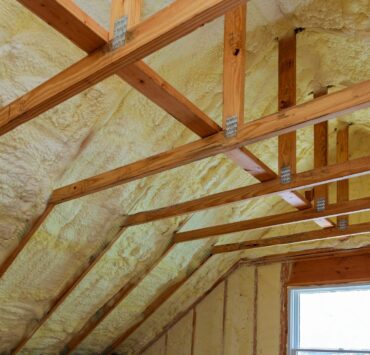Insulation installation is a great way to improve the energy efficiency of your home and reduce your heating and cooling costs.
It is a DIY-friendly project that can help improve your home’s energy efficiency.
Here’s a detailed explanation of how to install insulation:
1.Determine the type of insulation:
There are several types of insulation, including fiberglass, cellulose, spray foam, and more:
Fiberglass is a common type of insulation that is made from glass fibers and is available in rolls or batts. Fiberglass is often used in homes to insulate walls and attics.
Cellulose is another type of insulation, but it’s made from recycled paper. It’s available in loose-fill form, which means that it can be poured into walls, attics, and other areas. This type of insulation is ideal for those who are environmentally conscious, as it’s made from recycled materials.
Spray foam insulation is a type of insulation that is sprayed into place and then expands to fill the area. This type of insulation is ideal for irregularly shaped spaces, as it can be molded to fit any area. Spray foam insulation is also great for reducing air infiltration, as it seals all cracks and gaps.
When choosing the best type of insulation for your project, you should consider factors such as the location of the insulation, the R-value you need, and your budget. The R-value is a measure of the insulation’s ability to resist heat transfer, and the higher the R-value, the better the insulation will perform. Additionally, you should consider your budget, as different types of insulation vary in cost.
2. Measure the area to be insulated:
Measure the length, height, and depth of the area you want to insulate. This information will help you determine how much insulation you need to buy.
3.Prepare the area:
Remove any old insulation and make sure the area is clean and dry. If you’re insulating a wall, remove any electrical outlet covers. If you’re insulating an attic, make sure there’s proper ventilation to prevent moisture buildup.
4.Cut the insulation to size:
Cut the insulation to the appropriate length and width for the area you’re insulating. Use a straightedge and a utility knife to make clean cuts.
5. Install the insulation:
For walls, use a staple gun to secure the insulation in place. For attics, place the insulation between the joists and use a staple gun to secure it. Make sure the insulation is snug against the wall or joists, without any gaps or compressions.
6. Seal any gaps:
Use caulking or spray foam to seal any gaps around electrical outlets, windows, or doors to prevent air from escaping. This will help ensure that the insulation is as effective as possible.
7. Replace electrical outlet covers:
Put the covers back on the outlets and switch plates. Make sure they fit snugly to prevent air from escaping around the edges.
8. Check for proper ventilation:
After the insulation is installed, make sure there’s proper ventilation in the attic to prevent moisture buildup. This may involve installing vents or adding a layer of ventilation in the attic.
Installing insulation is a project that can be done by most homeowners with some basic DIY skills. It can be a time-consuming process, but it’s a relatively straightforward and cost-effective way to improve your home’s energy efficiency.
How to DIY insulation installation Video
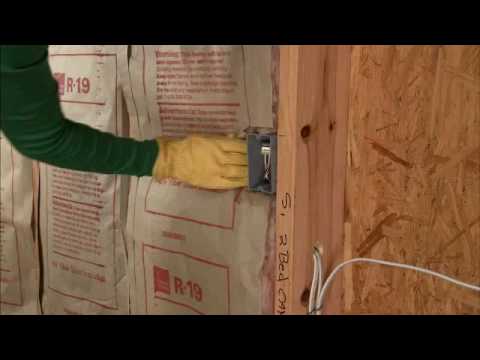
Most Asked Questions About Installing Insulation
Insulation is an important aspect of home construction, as it helps to regulate temperature, maintain indoor air quality, and reduce energy bills. However, installing insulation can be confusing and even frustrating, especially if you don’t know the proper techniques. Here, we will answer some of the most common questions about insulation installation to help you make the most of your investment.
-
Is there a wrong way to install insulation?
Yes, there are several ways you can install insulation wrongly. For example, if you install the insulation incorrectly, it may need to correctly fill the space between the wall studs or in the ceiling, leaving air gaps. Additionally, if the insulation is not installed securely, it may settle over time, compressing and reducing its effectiveness.
-
Do you nail or staple insulation?
It’s important to secure the insulation to the wall studs securely so that it doesn’t settle or compress over time. The most common secure insulation method is stapling it to the wall studs. This method is fast, easy, and effective. However, if you prefer to use nails, you can also use galvanized roofing nails.
-
Should insulation touch the drywall?
No, the insulation should not touch the drywall. Insulation is designed to regulate temperature; if it touches the drywall, it will absorb moisture from the air, which can lead to mold and mildew growth. To prevent this, it’s recommended to leave a gap of about 1-2 inches between the insulation and the drywall.
-
Is it cheaper to do the insulation yourself?
It depends on your skills and experience. If you have the knowledge and tools to install insulation correctly, then it may be cheaper to do it yourself. However, if you’re unsure how to install insulation or don’t have the proper tools, it’s best to hire a professional to ensure the job is done correctly.
-
Do I need an air gap for insulation?
Yes, you need an air gap for insulation. This is because insulation needs space to circulate air to regulate temperature effectively. If the insulation is too close to the drywall, it will absorb moisture, reducing its effectiveness and potentially leading to mold growth.
-
Should you put plastic over the insulation on walls?
Yes, it’s recommended to put plastic over insulation in walls. This helps to reduce moisture buildup and prevent mold growth. The plastic should be a vapor barrier and should be installed on the warm side of the insulation.
-
Can you put too much insulation in the walls?
Yes, you can put too much insulation in the walls. This can lead to over-insulating the space, which can cause condensation and mold growth. It’s important to install insulation according to the manufacturer’s instructions and consult a professional if you’re unsure.
-
Is it OK to leave insulation uncovered?
No, it’s not recommended to leave insulation uncovered. This is because the insulation is designed to regulate temperature, and if it’s left exposed, it will not be effective. Additionally, insulation fibers can be irritating to the skin and eyes, so it’s important to cover it with drywall or other materials to prevent exposure.
-
Does fiberglass insulation paper go in or out?
The fiberglass insulation paper should face out towards the room. This helps to prevent moisture buildup, which can reduce the insulation’s effectiveness.
-
What thickness of plastic goes over insulation?
The thickness of plastic over insulation will depend on the specific insulation product and the local building code requirements. It’s essential to consult with a professional or the insulation product manufacturer to determine the proper thickness of plastic required for your specific project.
-
What is the healthiest insulation?
The healthiest insulation depends on personal preferences and needs. Some popular options include cellulose insulation, made from recycled paper, and cotton insulation, made from recycled denim. These options are considered to be healthier than fiberglass insulation, as they do not release harmful chemicals into the air. They are also made from recycled materials, making them environmentally friendly.
-
Can you touch insulation with bare hands?
It’s not recommended to touch insulation with bare hands. This is because the fibers from some types of insulation can irritate the skin and eyes. It’s best to wear gloves or other protective gear when handling insulation.
-
Does touching insulation require gloves?
Yes, it’s recommended to wear gloves when handling insulation. This helps prevent skin and eye irritation from the fibers in some types of insulation. Additionally, wearing gloves helps to keep the insulation clean and free from oils and other contaminants.
In conclusion, installing insulation is an essential aspect of home construction and renovation. By following the proper techniques and using the right tools, you can ensure that your insulation will be effective and safe. If you’re unsure how to install insulation, it’s best to consult a professional to ensure the job is done correctly.
